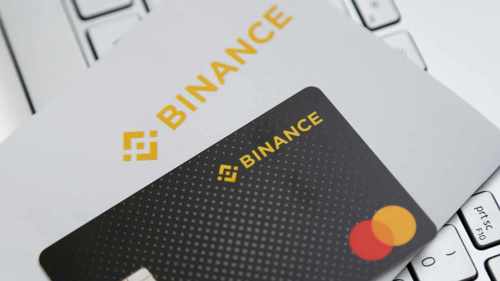Binance Mastercard Launches in Brazil - Can Crypto Cards Make Digital Assets Mainstream?
Cryptocurrency, in the form of Bitcoin, Ether, or any of the other various coins and stablecoins, occupy an extremely popular space in the market. But to date, their use for day-to-day payments is niche. However, this is starting to change, with mainstream payments companies increasingly partnering with brands to enable different ways to access cryptocurrency.
One such way of reaching a more mainstream audience is via crypto cards. Binance, the largest cryptocurrency exchange in terms of daily trading volume of crypto, launched a crypto card in Brazil, alongside Mastercard, at the beginning of the month. This sees crypto payment options in one of the world’s top ten markets for cryptocurrency adoption expand exponentially.
The Binance Mastercard enables verified users in Brazil to pay with cryptocurrencies at more than 150 million Mastercard-accepting merchants worldwide. At the point of checkout, cryptoassets such as Bitcoin, Ethereum, stablecoins, and over 100 other supported tokens are converted into local fiat currency in real-time. This signals a major step towards mainstream acceptance of cryptocurrencies in everyday life; bridging the gap between digital assets and traditional finance in Brazil, and paving the way for accelerated adoption, greater payment choice, and increased financial innovation across the national payments landscape.
The Binance Mastercard can be used for purchases in store and online, and also gives cardholders the opportunity to earn up to 2% cashback on eligible transactions; capped at 120 BRL (USD $22.59) per month. The launch is part of Binance’s ongoing efforts to expand the use cases of cryptocurrencies and bring them closer to traditional finance; empowering Brazilian nationals to make payments anywhere in the world.

Source: Binance
Crypto Adoption
According to Chainalysis, Brazil ranks as the fifth largest adopter of crypto worldwide, and the largest in Latin America. Latin America saw adoption surge 63% in 2025; making it one of the fastest-growing regions for crypto globally. Chainalysis states that both retail and institutional investors have pushed Brazil, in particular, into its global fifth position.
Adoption of paying with crypto is steadily advancing worldwide too, fuelled by continued innovation in payment instruments and growing user confidence in digital assets. While penetration remains higher among tech-savvy populations, and in regions facing economic volatility, mainstream accessibility is increasing as established players continue to bring crypto rails to everyday spending. This recent launch marks an important stage of development - it enables consumers to seamlessly convert cryptocurrencies into Brazilian reals at the point of sale; facilitating purchases across millions of merchants both online and in store. This card exemplifies how crypto payments are gradually blending into existing financial ecosystems; providing a compelling alternative for those seeking greater flexibility or hedging against inflation.
Within Brazil, and comparable emerging markets, such solutions are particularly resonant. Limited access to traditional banking fuels demand for financial alternatives, while a culture of rapid digital adoption and government initiatives such as Pix have primed consumers for new payment modalities. The integration of the Binance Mastercard with local payment infrastructure allows Brazilian residents not only to spend their crypto holdings directly, but also to benefit from rewards and real-time conversion rates offered by leading exchanges. As regulatory clarity develops and infrastructure matures, Juniper Research expects similar card-based crypto payment models to expand into other regions; deepening global adoption and shaping the next phase of digital finance.
Why Move Towards This?
From a consumer standpoint, some advantages of adopting crypto card payments include:
- Lower fees and faster settlement, especially for cross-border spend and remittances, which can reduce costs and waiting times compared with traditional rails.
- Always-on availability enables transfers outside banking hours; improving convenience for urgent or international payments.
- Greater access and inclusion for people with only a smartphone and Internet; expanding participation where traditional banking is limited.
- Rewards and cashback on crypto-linked spend to add tangible value and encourage habitual use.
Looking at it from a provider perspective on the other hand, some advantages include the following:
- Reduced intermediary involvement and more direct transaction settlement can lower operating costs for merchants and platforms; with processing fees typically falling between 0.5%–1% for crypto compared to 1.5%-3.5% for credit and debit cards.
- Access to new customer segments, including cross-border shoppers, can lift conversion and average order values.
- Instant, irrevocable settlement improves cash flow and reduces reconciliation complexity across markets.
Although the adoption of cryptocurrencies as a primary payment method remains highly appealing, due to its potential to enhance speed, reduce costs, and foster financial inclusion, there are still significant questions which need to be addressed.
One of the foremost challenges is the fragmentation and lack of interoperability across different blockchains and stablecoins, which creates liquidity silos and complicates seamless payment experiences for both consumers and merchants. This fragmentation limits the ability to use cryptocurrencies universally and efficiently at scale; hindering the vision of a fully integrated, global digital payment ecosystem.
So What Comes Next?
Following the announcement of the Binance Mastercard, Juniper Research anticipates the adoption of cryptocurrencies as a mainstream payment method is likely to accelerate, particularly in fast-growing markets such as Brazil. The card’s global acceptance at millions of Mastercard merchants, combined with real-time conversion of cryptoassets into local currency at the point of sale, will make spending cryptocurrencies straightforward and accessible. This development will prompt other exchanges and payment providers to introduce similar products; broadening the availability of crypto payments worldwide.
Moreover, features such as cashback rewards and user-friendly app management will encourage regular use by consumers, while merchants will benefit from increased transaction volumes and access to new customer segments. Overall, this marks a significant shift towards integrating digital assets into everyday financial life; strengthening the bridge between traditional finance and the crypto ecosystem.
Christian Rau, Senior Vice President of Global Partnerships, Digital Assets, Blockchain, and Fintech Enablement at Mastercard, was quoted in the launch announcement saying that “Mastercard is working with leading exchanges globally to unlock the potential of cryptoassets for everyday use.” He went on to specify that the announcement of the Binance Mastercard marks an important step in Mastercard’s journey. This indicates that the movement towards a closer integration of cryptoassets with everyday financial systems will be largely driven by collaboration between traditional payment networks and leading crypto exchanges.
This approach indicates a future where seamless, secure, and compliant crypto payments are embedded within existing financial infrastructure; enabling broader consumer access and merchant acceptance.
As a Research Analyst at Juniper Research, Thomas provides up-to-date trends analysis, competitive landscape appraisal, and market sizing for industries such as A2A Payments, Digital ID & Verification & Merchant Fraud Prevention.
Latest research, whitepapers & press releases
-
 ReportDecember 2025
ReportDecember 2025AI Agents for Customer Experience Platforms Market: 2025-2030
Our comprehensive AI Agents for Customer Experience Platforms research suite comprises detailed assessment of a market that is set to disrupt mobile communications. It provides stakeholders with insight into the key opportunities within the AI agents for customer experience platforms market over the next two years.
VIEW -
 ReportDecember 2025Fintech & Payments
ReportDecember 2025Fintech & PaymentseCommerce Fraud Prevention Market: 2025-2030
Our eCommerce Fraud Prevention research suite provides a detailed and insightful analysis of this evolving market; enabling stakeholders from financial institutions, law enforcement agencies, regulatory bodies and technology vendors to understand future growth, key trends, and the competitive environment.
VIEW -
 ReportNovember 2025Telecoms & Connectivity
ReportNovember 2025Telecoms & ConnectivityeSIMs & iSIMs Market: 2025-2030
Juniper Research’s eSIMs and iSIMs research suite offers insightful analysis of a market set to experience significant growth in the next five years. The research suite provides mobile network operators (MNOs), original equipment manufacturers (OEMs), and eSIM management and platforms vendors with intelligence on how to capitalise on the market growth, and guidance on how eSIM-only devices and sensors, SGP.42, in-factory provisioning, and iSIMs will change the competitive landscape.
VIEW -
 ReportNovember 2025Fintech & Payments
ReportNovember 2025Fintech & PaymentsModern Card Issuing Platforms Market: 2025-2030
Our Modern Card Issuing Platforms Market research suite provides a detailed and insightful analysis of this evolving market; enabling stakeholders from banks, financial institutions, fintech companies, and technology vendors to understand future growth, key trends, and the competitive environment.
VIEW -
 ReportNovember 2025Fintech & Payments
ReportNovember 2025Fintech & PaymentsDigital Wallets Market: 2025-2030
Our digital wallets research suite provides detailed analysis of this rapidly changing market; allowing digital wallet providers to gain an understanding of key payment trends and challenges, potential growth opportunities, and the competitive environment.
VIEW -
 ReportOctober 2025Fintech & Payments
ReportOctober 2025Fintech & PaymentsDigital Identity Market: 2025-2030
Juniper Research’s Digital Identity research suite provides a comprehensive and insightful analysis of this market; enabling stakeholders, including digital identity platform providers, digital identity verification providers, government agencies, banks, and many others, to understand future growth, key trends, and the competitive environment.
VIEW
-
 WhitepaperDecember 2025Telecoms & Connectivity
WhitepaperDecember 2025Telecoms & ConnectivityHuman + AI: Drivers of Customer Experience AI Agents in 2026
Our complimentary whitepaper, Human + AI: Drivers of Customer Experience AI Agents in 2026, examines the key drivers of the AI agents for customer experience platforms market in 2025.
VIEW -
 WhitepaperDecember 2025Fintech & Payments
WhitepaperDecember 2025Fintech & PaymentsBeyond Chargebacks: The True Cost of Fraud for Digital Commerce
Our complimentary whitepaper, Beyond Chargebacks: The True Cost of Fraud for Digital Commerce, examines the state of the eCommerce fraud prevention market; considering the impact of evolving digital fraud strategies, including key trends such as identity theft, account takeovers, chargebacks, policy abuse and friendly fraud.
VIEW -
 WhitepaperNovember 2025Telecoms & Connectivity
WhitepaperNovember 2025Telecoms & ConnectivityeSIM-only Devices: The Impact on Operators, Consumers, and IoT
Our complimentary whitepaper, eSIM-only Devices: The Impact on Operators, Consumers, and IoT, explores the challenges and opportunities for the three segments, with a particular focus on eSIM-only smartphones and SGP.42.
VIEW -
 WhitepaperNovember 2025Fintech & Payments
WhitepaperNovember 2025Fintech & PaymentsUnlocking the Next Stage of Growth for Modern Card Issuing Platforms
This free whitepaper analyses key trends shaping the modern card issuing space, and the ways in which modern card issuing platforms can capture growth.
VIEW -
 WhitepaperNovember 2025Fintech & Payments
WhitepaperNovember 2025Fintech & PaymentsTop 10 Fintech & Payments Trends 2026
Fintech is evolving fast. From stablecoins to agentic AI, our annual guide reveals the shifts redefining payments, digital identity, and the future of money in 2026. Download your copy today.
VIEW -
 WhitepaperNovember 2025Fintech & Payments
WhitepaperNovember 2025Fintech & PaymentsDigital Wallets: Empowering Financial Inclusivity
Our complimentary whitepaper, Digital Wallets: Empowering Financial Inclusivity, examines the state of the digital wallets market; considering the impact of digital wallets on different geographies, how they are shaping the modern payments landscape through lower transaction fees and promoting financial inclusivity for underbanked populations, and how they are competing with established payment methods.
VIEW
-
Fintech & Payments
Digital Identity App Usage to Hit 6.2 Billion by 2030, Driven by Shift to Decentralised Models
December 2025 -
Telecoms & Connectivity
Travel eSIM Margins Under Pressure as Revenue per Gigabyte Falls 10% Globally in Two Years
December 2025 -
Telecoms & Connectivity
AI Agents to Power 1,000% More Customer Interactions for Enterprises Globally by 2027
December 2025 -
IoT & Emerging Technology
Global D2C Revenue Set for $370 Million Surge, But Satellite Operators Should Not Chase Full MNO Status
December 2025 -
Fintech & Payments
Digital Goods Fraud to Cost eCommerce Merchants $27 Billion Globally by 2030 as AI Tools Accelerate Attacks
December 2025 -
Fintech & Payments
AML Adoption to Hit 3.8 Million Businesses Globally by 2030, With Europe at the Forefront
November 2025



















